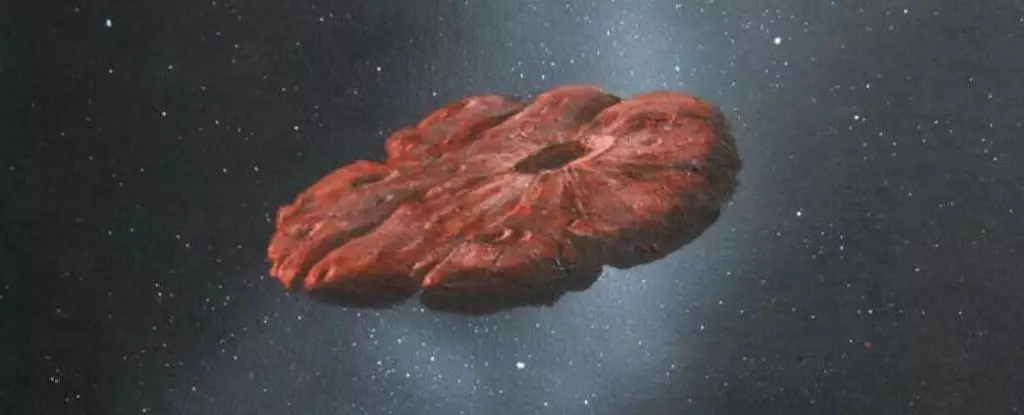In an incredible turn of events in late 2017, astronomers witnessed an enigmatic entity zipping through our Solar System at alarming speeds—a cosmic vagrant believed to have originated from another star system. Dubbed ‘Oumuamua, meaning “scout” in Hawaiian, this elongated visitor measured a staggering 400 meters in length and opened humanity’s eyes to the existence of interstellar objects (ISOs). ‘Oumuamua’s rapid passage through our cosmic neighborhood was not merely a chance encounter; rather, it served as a clarion call for the fields of astronomy and space exploration.
Interstellar objects are akin to relics of creation, remnants ejected from their respective star systems due to cataclysmic events such as planetary collisions. They encapsulate information about their origins, and ‘Oumuamua hinted that the cosmos holds more mysteries than we can imagine. Interestingly, it is estimated that more than 10 septillion of these celestial bodies traverse our Milky Way, underscoring the staggering potential for discovery. Yet, despite their abundance, these interstellar wanderers remain elusive; we’ve only managed to witness ‘Oumuamua and the subsequent Borisov Comet just two years later.
The Challenge of Detection and Interception
The enigmatic nature of ISOs is magnified by our current limitations in predicting their trajectories. Large objects like ‘Oumuamua may not often visit our solar neighborhood, and their high velocities, averaging 32.14 km/s, create a narrow window for observation and interception. Ground- and space-based telescopes face considerable challenges in tracking these fleeting visitors, leading to a trend where observations primarily occur after their rapid exit from our skies.
The solution may lie in innovative technology combined with creative strategies. As astronomers strive to move beyond passive observation, revolutionary concepts are emerging. Some organizations, such as NASA and the European Space Agency (ESA), are already laying the groundwork for dedicated ISO-hunting missions. NASA’s Bridge and ESA’s Comet Interceptor are ambitious endeavors aimed at real-time engagement with ISOs. The challenge, however, extends beyond mere detection—timely interception is paramount. The requirements for launch windows, the complexity of gravitational slingshot maneuvering, and significant preconditions necessitate a multifaceted approach to reap the potential benefits of close encounters with these travelers from afar.
Rethinking Space Missions with Cutting-Edge Technology
NASA’s Bridge mission endeavors to intercept an incoming ISO after it is identified, aiming to leverage precise timing and advanced technology for a successful launch. Comet Interceptor, meanwhile, offers a clever waiting strategy, remaining in storage orbit, ready to engage once a promising target is detected. The next frontier is to develop spacecraft that can deploy more flexibly and swiftly, enabling groundbreaking exploration of ISOs and unveiling the mysteries contained within.
Future missions could harness the promise of artificial intelligence and machine learning to enhance decision-making processes about navigating towards ISOs. Researchers are actively exploring swarm technology, coordinating multiple smaller spacecraft to maximize data gathering and refining targeting capabilities. Meanwhile, the Vera C Rubin Observatory is set to start a vast ten-year survey of the night sky, with simulations predicting a positive uptick in ISO detection. These advancements could open the floodgates to a treasure trove of knowledge about our cosmic neighbors.
New Propulsion Methods and Material Innovations
Effective propulsion systems play a critical role in the success of ISO exploration missions. Traditional rocket technologies are cumbersome and slow, and existing spacecraft face dire limitations as they wait in “storage orbits” before launching towards detected interstellar visitors. Innovative propulsion systems, like solar sails, utilize sunlight to provide thrust, potentially eliminating the need for heavy fuel tanks while also enabling efficient maneuvering. The evolution of laser-boosted sails could propel spacecraft to unprecedented velocities, fueling an eagerness to reach ISOs even faster.
However, approaching such high-speed objects presents its unique challenges. Spacecraft must be equipped to endure extreme conditions, including high temperatures and potential erosion from material ejected by ISOs. The search for lightweight yet durable materials is ongoing, with researchers experimenting with novel substances such as advanced carbon composites and even unconventional materials like 3D-printed cork and ceramics. A multidisciplinary approach encompassing various material sciences and engineering principles will pave the way for future ventures.
Collaboration for Cosmic Insight
Realizing the dreams of ISO exploration demands a concerted effort across various fields—observational astronomy, spacecraft engineering, and material science. Furthermore, the synergy between ground-based telescopes and space missions is imperative. Such collaboration can facilitate the predictive capabilities necessary to enhance our chances of successful encounters with interstellar objects. Yet, hurdles remain, particularly in light of potential cuts to US space science budgets, which could hinder the progress of transformative projects like the James Webb Space Telescope.
The promise of understanding interstellar objects holds profound implications for our comprehension of the universe. The secrets contained within these wanderers could enhance our knowledge of stellar life cycles, planetary formation, and the conditions surrounding distant star systems. As the cosmic terrain is unveiled, the dared dream of not just observing but interacting with these magnificent entities might soon become a reality—but only if we embrace innovation and adapt to the changes ahead.

